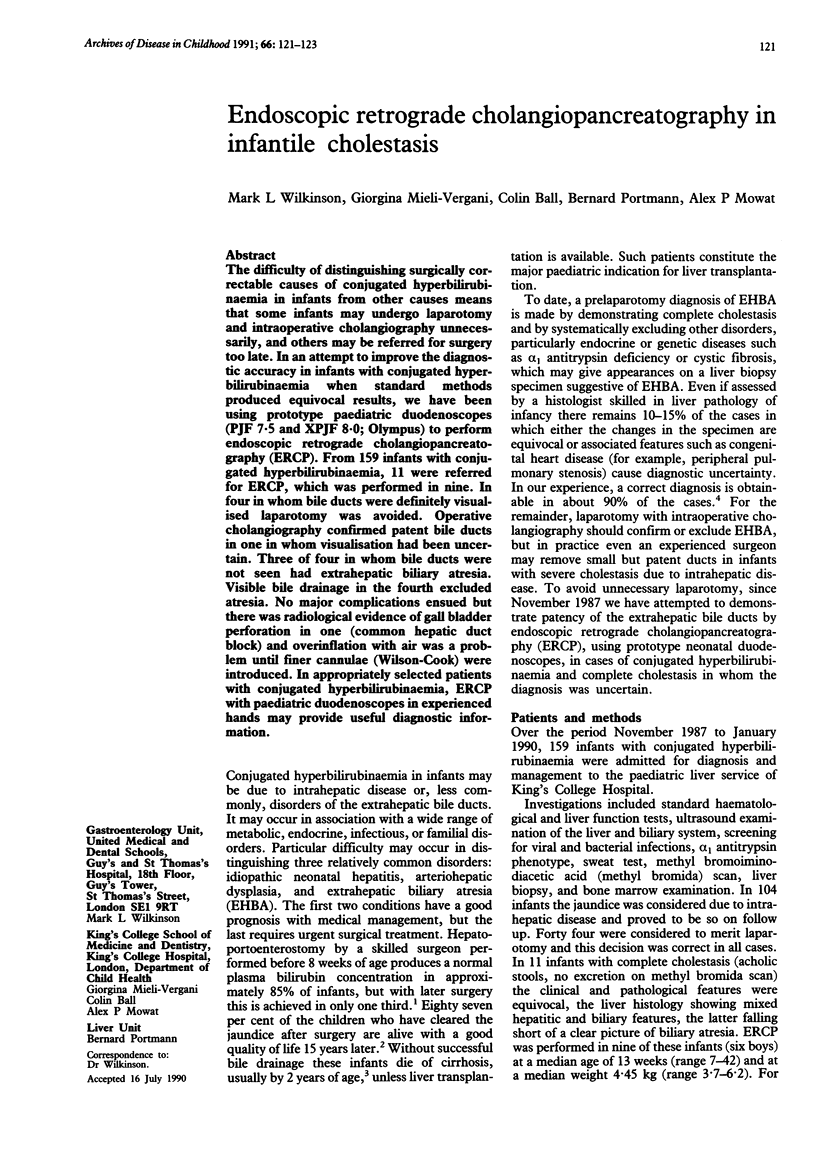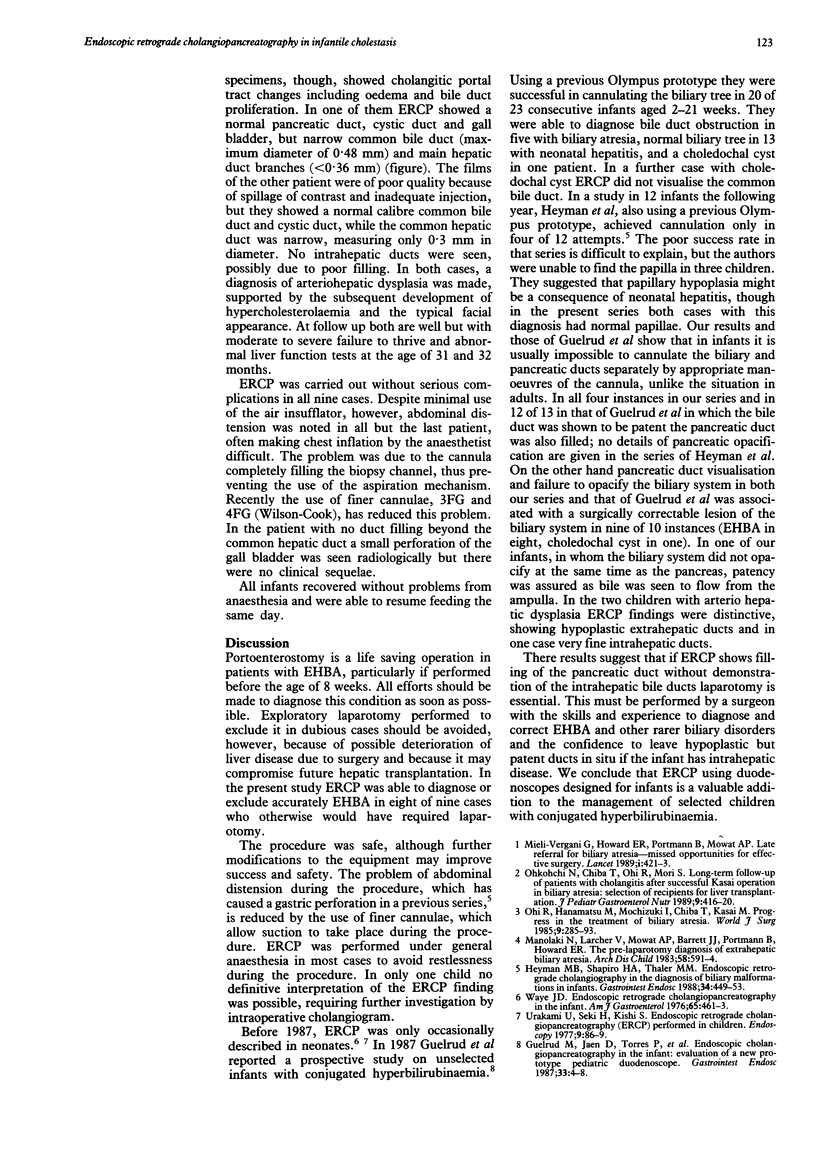Abstract
The difficulty of distinguishing surgically correctable causes of conjugated hyperbilirubinaemia in infants from other causes means that some infants may undergo laparotomy and intraoperative cholangiography unnecessarily, and others may be referred for surgery too late. In an attempt to improve the diagnostic accuracy in infants with conjugated hyperbilirubinaemia when standard methods produced equivocal results, we have been using prototype paediatric duodenoscopes (PJF 7.5 and XPJF 8.0; Olympus) to perform endoscopic retrograde cholangiopancreatography (ERCP). From 159 infants with conjugated hyperbilirubinaemia, 11 were referred for ERCP, which was performed in nine. In four in whom bile ducts were definitely visualised laparotomy was avoided. Operative cholangiography confirmed patent bile ducts in one in whom visualisation had been uncertain. Three of four in whom bile ducts were not seen had extrahepatic biliary atresia. Visible bile drainage in the fourth excluded atresia. No major complications ensued but there was radiological evidence of gall bladder perforation in one (common hepatic duct block) and overinflation with air was a problem until finer cannulae (Wilson-Cook) were introduced. In appropriately selected patients with conjugated hyperbilirubinaemia, ERCP with paediatric duodenoscopes in experienced hands may provide useful diagnostic information.
Full text
PDF


Images in this article
Selected References
These references are in PubMed. This may not be the complete list of references from this article.
- Guelrud M., Jaen D., Torres P., Mujica C., Mendoza S., Rivero E., Romer H., Avila B., Viera L. Endoscopic cholangiopancreatography in the infant: evaluation of a new prototype pediatric duodenoscope. Gastrointest Endosc. 1987 Feb;33(1):4–8. doi: 10.1016/s0016-5107(87)71474-6. [DOI] [PubMed] [Google Scholar]
- Heyman M. B., Shapiro H. A., Thaler M. M. Endoscopic retrograde cholangiography in the diagnosis of biliary malformations in infants. Gastrointest Endosc. 1988 Nov-Dec;34(6):449–453. doi: 10.1016/s0016-5107(88)71432-7. [DOI] [PubMed] [Google Scholar]
- Manolaki A. G., Larcher V. F., Mowat A. P., Barrett J. J., Portmann B., Howard E. R. The prelaparotomy diagnosis of extrahepatic biliary atresia. Arch Dis Child. 1983 Aug;58(8):591–594. doi: 10.1136/adc.58.8.591. [DOI] [PMC free article] [PubMed] [Google Scholar]
- Mieli-Vergani G., Howard E. R., Portman B., Mowat A. P. Late referral for biliary atresia--missed opportunities for effective surgery. Lancet. 1989 Feb 25;1(8635):421–423. doi: 10.1016/s0140-6736(89)90012-3. [DOI] [PubMed] [Google Scholar]
- Ohi R., Hanamatsu M., Mochizuki I., Chiba T., Kasai M. Progress in the treatment of biliary atresia. World J Surg. 1985 Apr;9(2):285–293. doi: 10.1007/BF01656322. [DOI] [PubMed] [Google Scholar]
- Ohkohchi N., Chiba T., Ohi R., Mori S. Long-term follow-up study of patients with cholangitis after successful Kasai operation in biliary atresia: selection of recipients for liver transplantation. J Pediatr Gastroenterol Nutr. 1989 Nov;9(4):416–420. doi: 10.1097/00005176-198911000-00003. [DOI] [PubMed] [Google Scholar]
- Urakami Y., Seki H., Kishi S. Endoscopic retrograde cholangiopancreatography (ERCP) performed in children. Endoscopy. 1977 May;9(2):86–91. doi: 10.1055/s-0028-1098495. [DOI] [PubMed] [Google Scholar]
- Waye J. D. Endoscopic retrograde cholangiopancreatography in the infant. Am J Gastroenterol. 1976 May;65(5):461–463. [PubMed] [Google Scholar]



